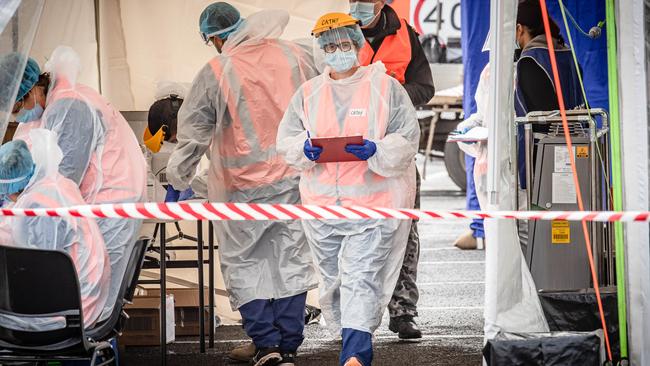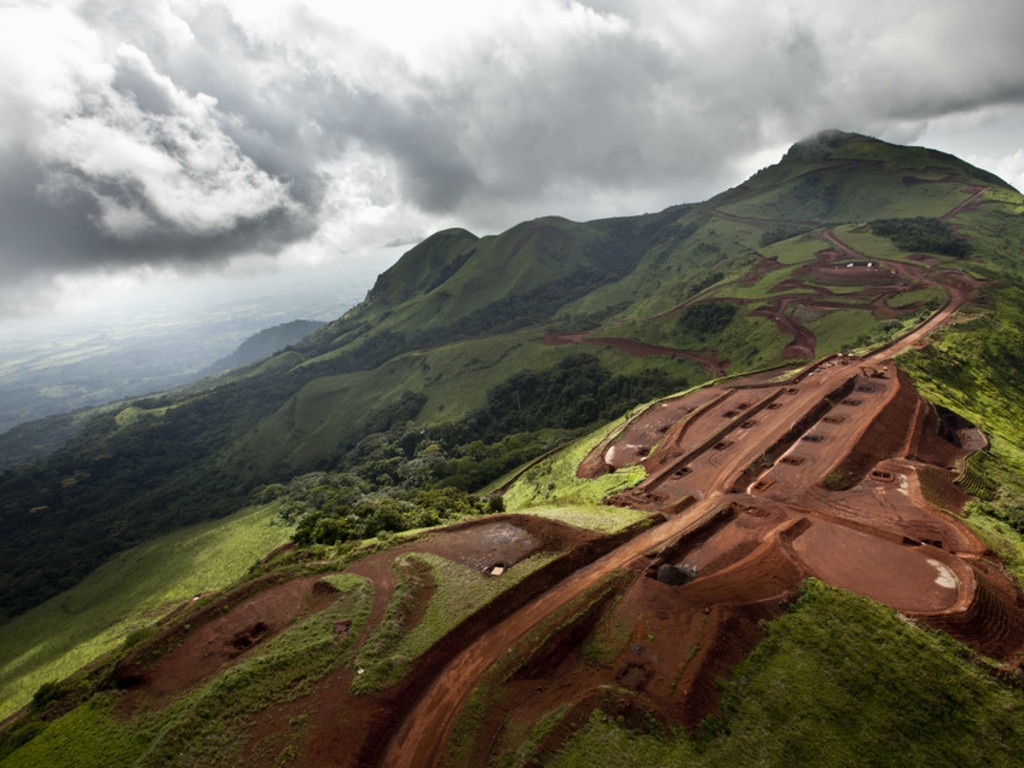Meatworks mull ‘robot butchers’ as abattoirs become COVID-19 hotspots
Abattoirs have become coronavirus hotspots, providing the ideal environment for COVID-19 to spread.

Colac — a small regional city of about 12,000 people with the Otway Ranges to its south and the wide pastures of Victoria’s Western District to its north — thought it was relatively safe from the coronavirus outbreak that is spreading across Melbourne like a bushfire.
But last month a COVID-19 ember hit the city’s lamb meatworks on the shores of Lake Colac. The virus spread across the abattoir, which now is linked to 54 infections and has regional Victorians in the state’s west on edge, while the meat-packing industry globally is considering ways it can incorporate more automation and keep its doors open.
The Colac meatworks, about 153km southwest of Melbourne, is not an isolated case. Abattoirs have become coronavirus hotspots, with their cool dry air to prevent meat from spoiling and employees working closely together for long shifts, deboning, slicing and dicing cuts from filet mignon to chuck steak providing the ideal conditions for the virus to spread.
Early in the pandemic, Cedar Meats in Melbourne’s inner west became a COVID-19 epicentre, infecting more than 110 people. It was quickly followed by neighbouring JBS abattoir, which closed after employees tested positive.
Geelong’s Golden Farms chicken abattoir has been linked to 16 cases, and a cluster from Bertocchi Smallgoods at Thomastown in Melbourne’s north has spread to 89 infections.
In the US the rampant spread of COVID-19 in meatworks means for the first time in memory for some Americans there isn’t enough meat to go around.
“Food processing facilities like meatworks have had to close due to a staff member being infected with the coronavirus, and all food processing industries where you have workers in small confined spaces are similarly at risk,” said Robert Henry, director of the Queensland Alliance for Agriculture and Food Innovation at the University of Queensland.
“Advanced technologies need to be adopted globally, in each region, to deliver local food production capability that could provide secure sources of food in future pandemics.”
The meat industry has been slow to adopt robotic machines. Animal carcasses vary in size and shape, and robotic butchers need to be able to match human precision in not leaving too much of a prime cut of meat on the bone and into the dog food bin. That’s the difference between meat selling wholesale at more than $15 a kilogram versus about 57c a kilogram.
But serious money is being invested into bringing the meat packing industry in line with other manufacturers, exploring similar technologies to those used by carmakers.
Tyson, the biggest US meat company by sales, has invested about $US500m ($693.3m) in technology and automation. Chief executive Noel White said those efforts likely would increase in the aftermath of the pandemic.
European meat plants have incorporated automation, using lasers and optical eyes to read cuts of meat on a conveyor belt and send them to different departments to be packed, weighed and shipped. A single worker at plants in Sweden, Denmark and France can do the work of eight or nine workers at a traditional abattoir.
The pandemic has accelerated this investment, given the challenges of physically distancing inside an abattoir. Fiona Stanaway, senior lecturer in clinical epidemiology at the University of Sydney, said COVID-19 transmission also was likelier if people were working in proximity to each other indoors for longer than two hours.
“Once you have a lot of community transmission then these outbreaks will start to pop up in environments where it is quite easy for people to transmit to each other,” Dr Stanaway said.
“Then there is the actual workplace, and it seems these abattoirs and the packing plants, just because of the way they are set up, it’s harder for people to physically distance. If you are in a closed environment with people for more than two hours, if one of you is infected there is a chance that by the end of that shift other people will be infected.”
But some Australian abattoirs have found that adopting stringent infectious control and safety measures — one plant in southwest Victoria has even flown in meat inspectors who have tested negative to COVID-19 — are effective in protecting their workforce and operations.
Hugh Killen, chief executive of Australia’s biggest integrated cattle and beef producer, AACo, said the company “went hard and early” in managing the biosecurity risk to its workforce and animals.
He said each day the pandemic continued raised that risk, and AACo had a COVID-19 situation management team that met daily to monitor the situation.
“I had a moment where I woke up one day and thought ‘what would happen if we have coronavirus in our business, who is going to look after my animals?’
“That was a real moment for me that kept me awake for many nights and that’s why we went hard on it. We are continually assessing that risk and trying to make the best decisions that we can up the top because this thing is very fluid.”
For that reason, Mr Killen said protecting AACo against COVID-19 was challenging.
“We’ve seen the issues down in the Victorian plants and we’ve seen the big issues going on in America, and one of the big reasons why we really ascribe to strong borders into states like Queensland is to keep those plants open up here.
“All the abattoirs that we use are highly sophisticated and are thinking about this. They have had really good biosecurity in place for a long time now. But it’s not without its challenges.
“The workforce is highly connected as families and that’s probably why you have as much a risk as anything else. There might be two or three members of a family who work in a particular plant, which is one of the reasons why it spreads so quickly, as opposed to any of the procedures they put in place.”
ADDITIONAL REPORTING: Dow Jones Newswires








To join the conversation, please log in. Don't have an account? Register
Join the conversation, you are commenting as Logout